Eco Friendly Construction Calgary

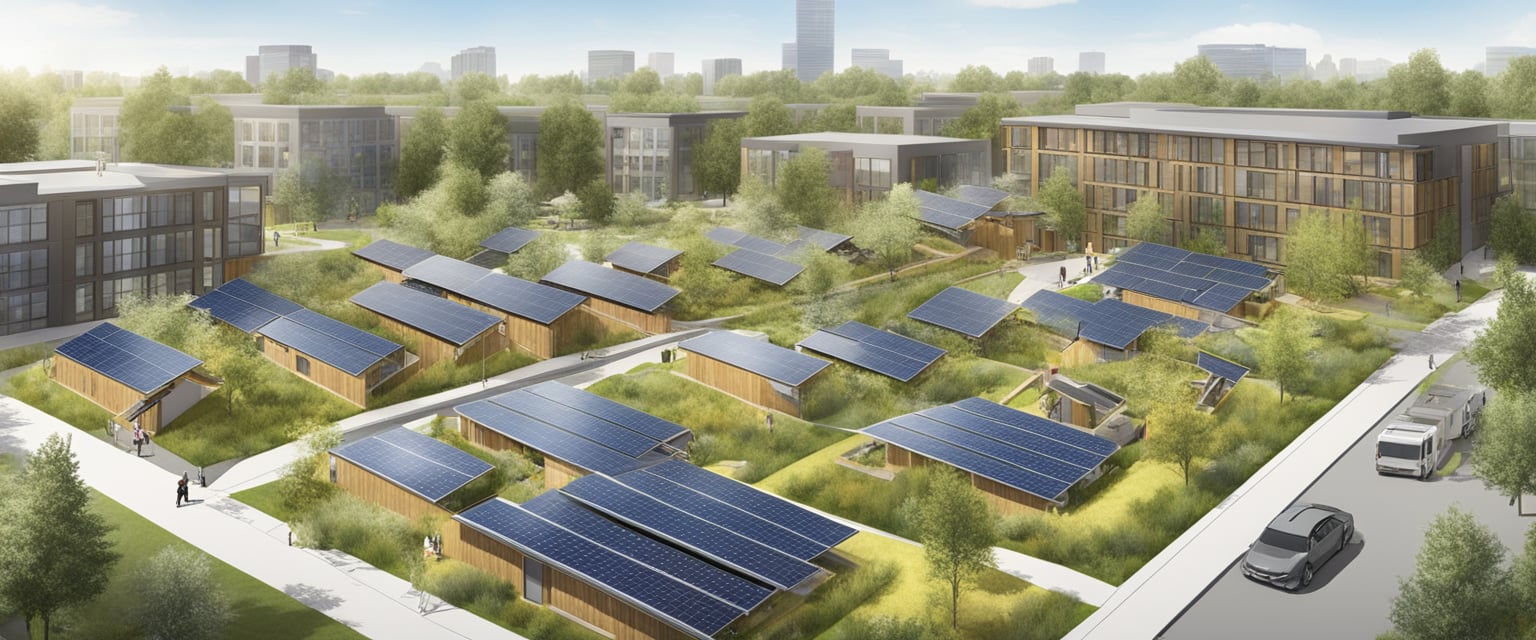
Building a Sustainable Future
By emphasizing energy efficiency, responsible resource management, and sustainable materials, eco-friendly construction delivers multiple benefits beyond just aesthetics. Modern innovations in this field, including advanced water management strategies and adherence to regulatory standards, ensure that Calgary’s new developments can thrive amidst growing environmental challenges.
This approach to building not only enhances the quality of life for residents but also contributes to the preservation of the surrounding natural landscape. Embracing these methods can significantly impact both local communities and the planet as a whole.
Key Takeaways
- Eco-friendly construction improves energy efficiency and reduces costs.
- Sustainable practices contribute to healthier living environments.
- Innovations are key in managing resources and preserving natural landscapes.
Fundamentals of Eco-Friendly Construction
Eco-friendly construction focuses on minimizing environmental impact while maximizing energy efficiency and resource conservation. In Calgary, this approach incorporates sustainable design practices that reduce carbon footprints and promote water conservation.
Defining Eco-Friendly Construction in Calgary
Eco-friendly construction in Calgary involves using materials and techniques that contribute to sustainability. It prioritizes methods that reduce a building’s environmental impact throughout its lifecycle.
Key aspects include:
- Sustainable Materials: Utilizing recycled, renewable, or locally sourced materials.
- Energy Efficiency: Implementing technologies such as high-efficiency insulation and energy-efficient windows.
- Water Conservation: Designing systems for rainwater harvesting and greywater recycling.
Calgary’s eco-conscious builders often follow guidelines set by local policies and resources to ensure compliance and effectiveness.
Benefits of Eco-Friendly Building Practices
The advantages of eco-friendly building practices in Calgary are significant. These benefits extend to individuals, businesses, and the broader community.
- Reduced Carbon Footprint: Sustainable methods lower greenhouse gas emissions, contributing positively to climate change efforts.
- Lower Operating Costs: Energy-efficient buildings typically incur lower utility costs, saving money over time.
- Enhanced Property Value: Eco-friendly homes often have higher market demand and resale values due to their energy-efficient features.
Ultimately, eco-friendly construction in Calgary supports a healthier environment and aligns with contemporary sustainability goals.
Key Elements of Sustainable Architecture
Sustainable architecture focuses on practices that reduce environmental impact while improving energy efficiency. Key elements include the integration of renewable energy sources, selection of sustainable building materials, and design strategies that prioritize energy efficiency.
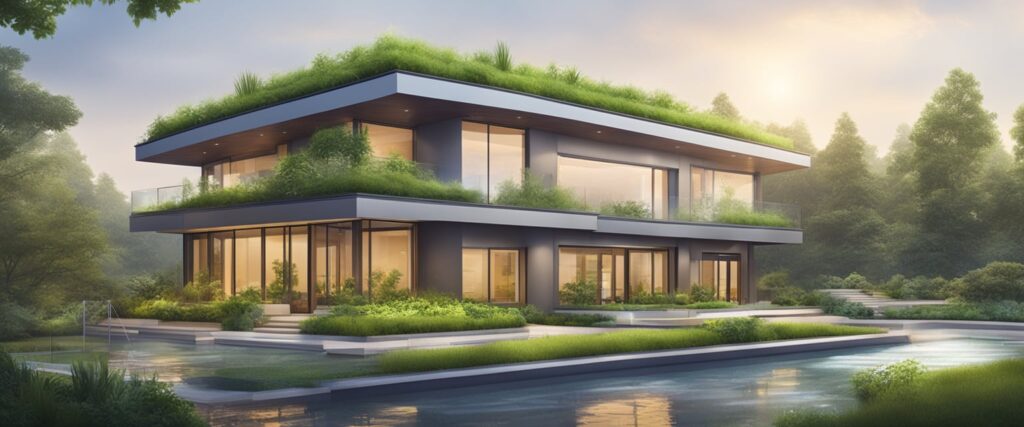
Incorporating Solar Panels and Renewable Energy
Incorporating solar panels into building designs allows for significant energy savings. These systems convert sunlight into electrical energy, reducing reliance on non-renewable sources.
Buildings equipped with solar panels can often generate surplus energy, which may be fed back into the grid, providing potential financial benefits.
Additionally, these systems can complement other renewable energy solutions, such as geothermal heating or wind energy, creating a more comprehensive sustainability strategy. This multifaceted approach not only benefits the environment but also enhances the building’s overall efficiency.
Utilizing Sustainable Building Materials
The choice of building materials plays a crucial role in sustainable architecture. Utilizing materials that are renewable, recycled, or locally sourced minimizes the carbon footprint associated with transportation and production.
Common sustainable options include bamboo, reclaimed wood, and recycled metal. These materials often outperform traditional options in terms of durability and energy efficiency.
Selecting low-VOC (volatile organic compound) paints and finishes improves indoor air quality. By prioritizing these materials, architects create healthier living spaces while reducing environmental impact.
Designing for Energy Efficiency
Energy efficiency in architectural design involves strategic planning to optimize a building’s function. Elements like proper insulation, energy-efficient windows, and LED lighting contribute significantly to reducing energy consumption.
Designing spaces to maximize natural light minimizes the need for artificial lighting during the day. Moreover, passive heating and cooling techniques, such as strategic placement of windows and thermal mass, enhance comfort without excessive energy use.
Incorporating smart home technology can further increase efficiency by allowing for automation of heating, cooling, and lighting systems, ensuring they only operate when needed.
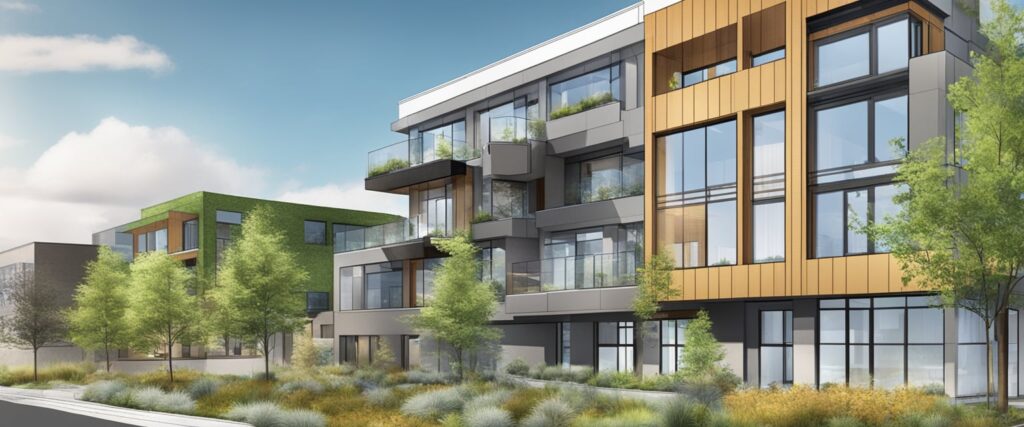
Water Management Strategies
Effective water management is essential in eco-friendly construction, especially in urban areas like Calgary. Innovative strategies can significantly enhance water conservation, reduce waste, and promote sustainability in buildings. The following sections focus on actionable methods that construction projects can adopt.
Rainwater Collection Systems
Implementing rainwater collection systems is a key strategy for sustainable water management. These systems capture rainwater from roofs and other surfaces, directing it into storage tanks for later use.
Benefits include reducing reliance on municipal water supply and lowering water bills. Collected rainwater can be utilized for irrigation, toilet flushing, and even washing vehicles. Installing such systems can also help mitigate stormwater runoff, which contributes to flooding and water quality issues.
Components of a rainwater collection system include:
- Catchment area: Roofs that funnel rainwater.
- Conduits: Pipes or gutters transporting water.
- Storage tanks: Designed to store the collected water.
Installing Low-Flow Fixtures
Low-flow fixtures play an important role in reducing water consumption in buildings. These fixtures, which include low-flow toilets, showerheads, and faucets, are designed to use less water without sacrificing performance.
For instance, low-flow toilets typically use 1.28 gallons per flush, compared to older models that consume 3.5 gallons or more.
Benefits of installing low-flow fixtures:
- Water conservation: Significant reduction in overall water usage.
- Cost savings: Lower water bills from decreased consumption.
- Environmental impact: Helps preserve local water sources.
Implementing Water Recycling Solutions
Water recycling solutions are vital for enhancing water conservation efforts in construction. Gray water systems collect wastewater from sinks, showers, and washing machines for reuse. This process minimizes the need for fresh water and reduces wastewater output.
Recycled water can be utilized for irrigation, toilet flushing, and even cooling systems in buildings.
Key components of water recycling solutions include:
- Filtration systems: Ensure recycled water meets safety standards.
- Storage tanks: Keep recycled water for future use.
- Piping systems: Distribute recycled water to designated areas.
Incorporating these strategies not only supports environmental stewardship but also aligns with community efforts for sustainable living in Calgary.
Innovations in Eco-Friendly Construction
The construction sector in Calgary is rapidly evolving with a strong focus on sustainability. Innovations in eco-friendly building practices are shaping the future, emphasizing energy efficiency and minimal environmental impact.
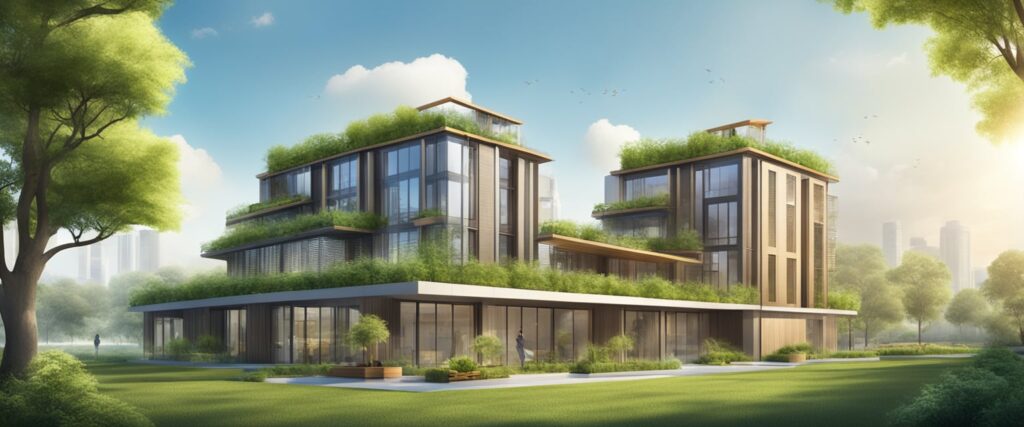
Trends and Advancements in Green Building
Calgary is witnessing significant trends in green construction, driven by the need for sustainable solutions. The incorporation of solar panels is increasingly common, harnessing renewable energy to power buildings efficiently. These systems are designed to reduce energy costs and carbon footprints.
Furthermore, the adoption of LED lighting is transforming how spaces are illuminated. LED systems are energy-efficient and have a longer lifespan compared to traditional bulbs. This shift not only conserves energy but also enhances the overall quality of lighting in residential and commercial properties.
Other advancements include the use of sustainable materials, such as recycled and locally sourced components. These materials contribute to lower emissions and support the local economy.
Case Studies: Successful Projects in Calgary
Several notable projects in Calgary exemplify the effectiveness of eco-friendly construction. For instance, the Turnkey Renovations firm showcases a project that integrates solar technology with green building practices. This project utilizes eco-friendly materials and innovative design to minimize environmental impact while maximizing energy efficiency.
Some initiative, which produces environmentally friendly finishing materials. Their commitment to sustainability has resulted in a series of successful installations across the city, enhancing both functionality and aesthetics of buildings.
These case studies highlight not only the feasibility of sustainable techniques but also the growing market for eco-friendly construction in Calgary. Through these efforts, the city is making strides towards a greener future.
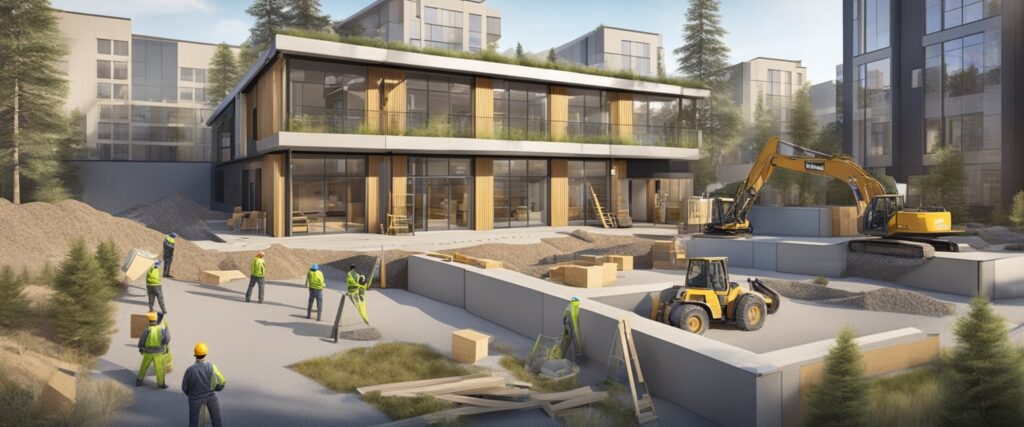
Regulations and Certifications
Navigating the landscape of eco-friendly construction in Calgary involves understanding local building codes and the importance of environmental certifications. These regulations ensure that construction projects adhere to sustainability standards while promoting safety, efficiency, and compliance with environmental goals.
Understanding Local Building Codes
In Calgary, local building codes are essential for guiding construction practices. These codes establish minimum requirements for safety, performance, and sustainability in building projects. They encompass various aspects such as structural integrity, fire safety, and accessibility.
Builders must be aware of specific provisions regarding eco-friendly practices, including the use of sustainable building materials and energy-efficient designs. Compliance with the City of Calgary’s Sustainable Building Policy requires adherence to guidelines that promote longevity and environmental responsibility in construction.
Key elements of local codes include:
- Materials: Preference for recycled or sustainably sourced materials.
- Energy Efficiency: Standards for insulation, HVAC systems, and renewable energy sources.
- Water Conservation: Requirements for plumbing fixtures and irrigation systems designed to minimize water use.
Role of Environmental Certifications
Environmental certifications play a significant role in promoting sustainable construction practices in Calgary. These certifications, such as LEED (Leadership in Energy and Environmental Design) or BOMA BESt (Building Owners and Managers Association Better Environmental Since), provide a framework for assessing the sustainability of buildings.
Achieving certification demonstrates a commitment to eco-friendly practices, enhancing the building’s marketability and value. It also helps streamline compliance with local regulations by providing clear benchmarks for sustainability.
Benefits of pursuing environmental certifications include:
- Reduced Operational Costs: Energy-efficient designs lower utility bills.
- Increased Property Value: Certified buildings often attract higher rental or sale prices.
- Enhanced Reputation: Commitments to sustainability can enhance brand image and attract conscientious tenants or buyers.
Incorporating these regulations and certifications is crucial for professionals in Calgary’s construction industry.
Planning and Executing an Eco-Friendly Project
Planning and executing an eco-friendly construction project involves careful consideration of sustainable practices and budgeting for environmentally responsible features. Thoughtful planning can lead to a reduced environmental footprint and long-term savings.
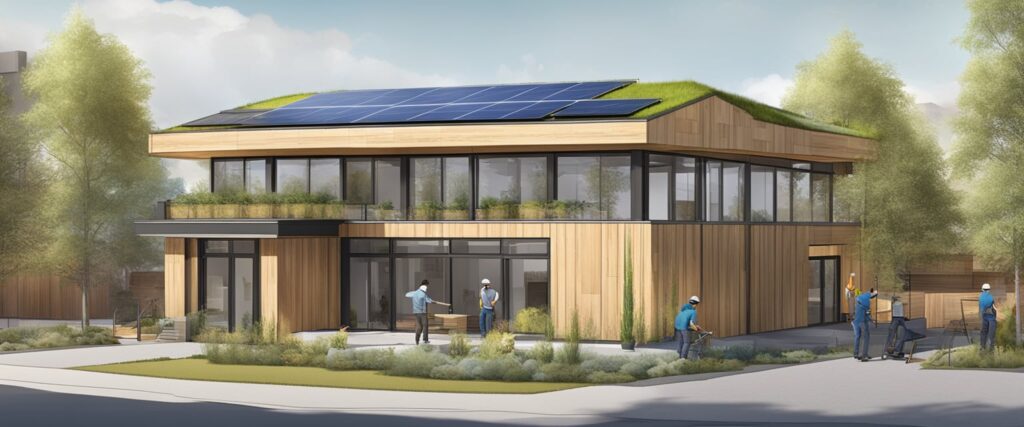
Creating a Sustainable Construction Plan
A sustainable construction plan begins with the selection of environmentally friendly building materials. Using locally sourced materials reduces transportation emissions and supports the local economy. Sustainable options like bamboo, recycled steel, and reclaimed wood offer durability while minimizing ecological impact.
Incorporating renewable energy solutions, such as solar panels, is crucial. This investment can significantly lower long-term energy costs and contribute to energy independence. Additionally, maximizing natural light through strategic window placement can reduce reliance on artificial lighting.
The plan should also include efficient waste management strategies, such as recycling and reusing materials on-site. Effective communication with contractors about these sustainable practices ensures alignment and adherence throughout the project.
Budgeting for Eco-Friendly Features
Budgeting for eco-friendly features requires a clear understanding of initial costs versus long-term savings. While sustainable materials and technologies may present higher upfront expenses, they often result in reduced operational and maintenance costs.
When budgeting, prioritize essential eco-friendly features. This may include high-efficiency LED lighting systems, which consume less energy and last longer than traditional bulbs. Installing smart home technology can enhance energy efficiency by optimizing heating and cooling based on occupancy.
It’s also effective to explore potential rebates or incentives for green building practices from local governments. These can offset some costs associated with solar panel installation or energy-efficient appliances. Balancing prudent budgeting with sustainable choices can lead to a successful eco-friendly project.
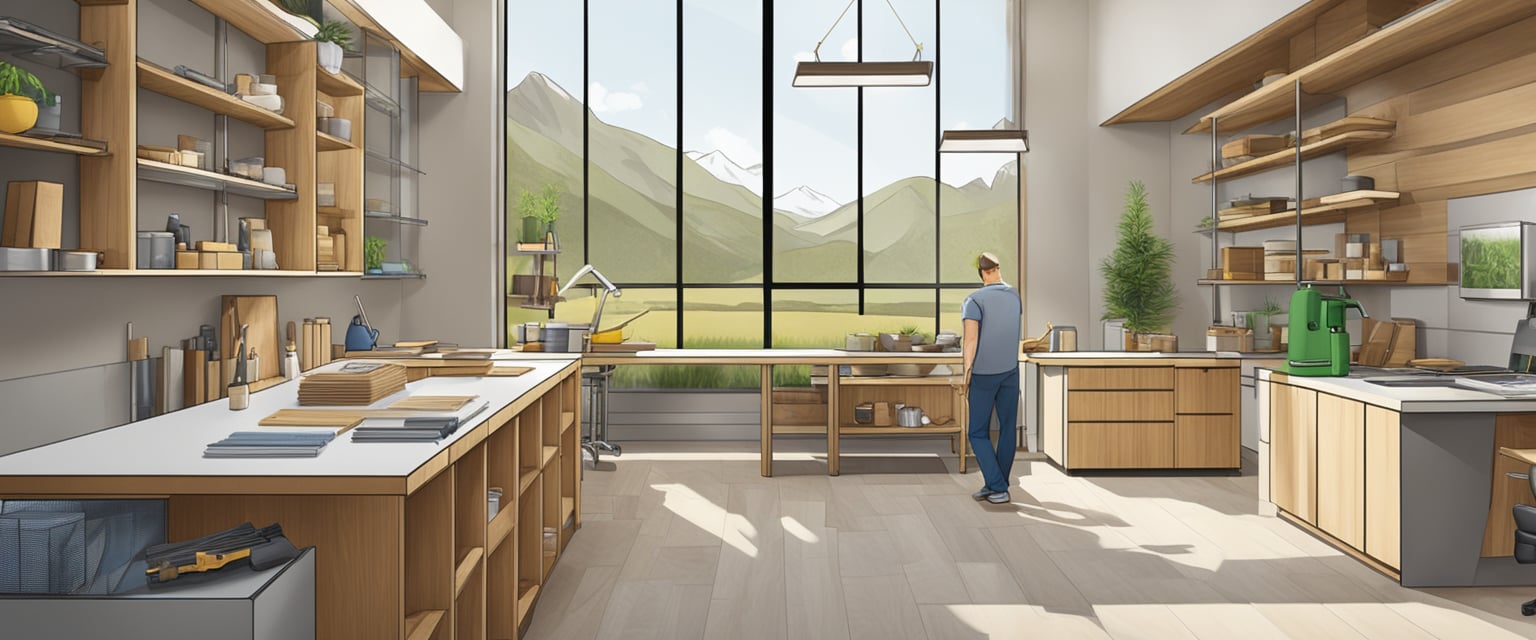
Frequently Asked Questions
Eco-friendly construction in Calgary encompasses various sustainable practices, methods, and technologies. Key aspects include characteristics of building methods, cost comparisons, composting facilities, Net Zero home options, and specific features of sustainable homes.

Eco-friendly construction methods in Calgary typically focus on minimizing energy consumption and reducing environmental impact. This includes using sustainable materials, optimizing natural light, and incorporating energy-efficient systems such as solar panels and high-performance insulation.
The cost of eco-friendly construction in Calgary can be higher initially than traditional building methods. However, the long-term savings on utilities and the potential for increased property value may offset these upfront costs over time.
Calgary has several composting facilities located throughout the city, including the East Calgary Environmental Park and the own recycling depots. These facilities support sustainable building practices by allowing builders and homeowners to properly dispose of organic waste, which can be converted into nutrient-rich compost.
Calgary offers various options for purchasing Net Zero homes, including new developments designed with energy efficiency in mind. Builders like Turnkey Renovations and other local developers provide homes that produce as much energy as they consume, promoting sustainability.
In Turnkey Renovations, sustainable home features often include solar panels, energy-efficient appliances, and advanced insulation techniques. These elements work together to reduce energy consumption while enhancing comfort and reducing utility costs for homeowners.
Several eco-friendly showhomes are available for viewing in Calgary, featuring various sustainable designs and technologies. Builders like Turnkey Renovations regularly showcase properties that highlight eco-friendly features and energy-efficient living.
